Since bed bugs, one of the more common house bugs, can reside in your bed sheets, it’s good that you’re here!
Thank you for reading this post, don't forget to the best blogger Guy About Home who offers the best garden and home improvement tips! If you are a home decor and design fan, don't miss the tips on home ideas. If you are a home garden owner, then you might be interest in our complete guides to house plants!
Each of us spends our days dealing with stress from work, school and personal trials. We handle these, day in and day out and our bed is the one place we can retreat to for some much-needed rest and sleep. Knowing we have a safe, comfortable haven to recharge our batteries as we sleep throughout the night can be a pleasant thought.
Maintaining a clean bed and bedroom can sometimes be challenging. One primarily needs to clean and wash bed sheets to keep a clean bed which is the central piece of furniture in your bedroom. This is easily achieved by following the step by step guide on how to clean your room.
How often you should wash your sheets
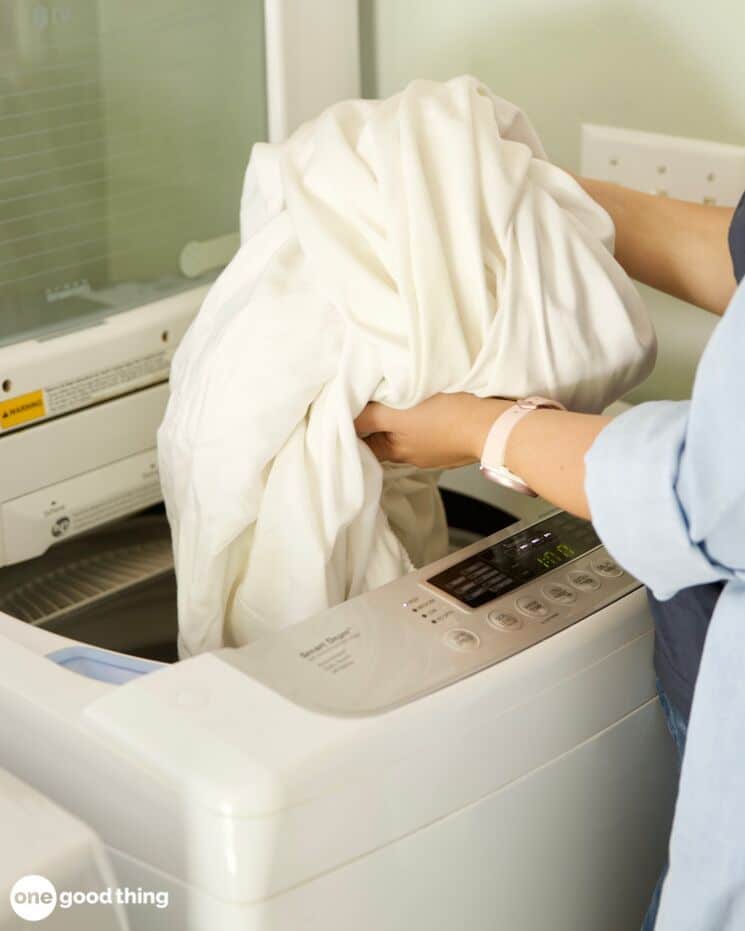
Image Source: Pinterest
If your not too sure how often to wash your sheets, do not wait until you are starting to itch to toss them in the wash. Optimally, it is recommended that you change your sheets once a week, every two weeks being the absolute limit.
Think about it, in one day; you spend a third or more of your time sometimes sitting, mostly laying and sleeping on your bed. The human body sheds about a million skin cells per day.
When you add the dirt that you inadvertently bring from outside plus the sweat you produce when you sleep, your bed can become a breeding ground for germs and bedbugs.
To make sure that your entire family remains healthy and stay free from bed bugs or bacteria is the best reason to wash each of your bed coverings at least once a week. This includes every pillowcase, bed sheet, blanket, comforter or duvet that your family members use on each of their beds.
For your convenience, it would be good to have three sets of sheets for each bed in your home. The first being what is currently being used, the second set in the wash and the third set already washed and cleaned, carefully stored in a cabinet.
The peace of mind in knowing your family is safe and comfortable is reward enough for washing your clan’s sheets and enjoying a soft, clean, fresh smelling bed is a nice bonus as well.
NOTE: Make sure to wash new sheets before using them at home, they don’t come pre-washed
How to wash bed sheets
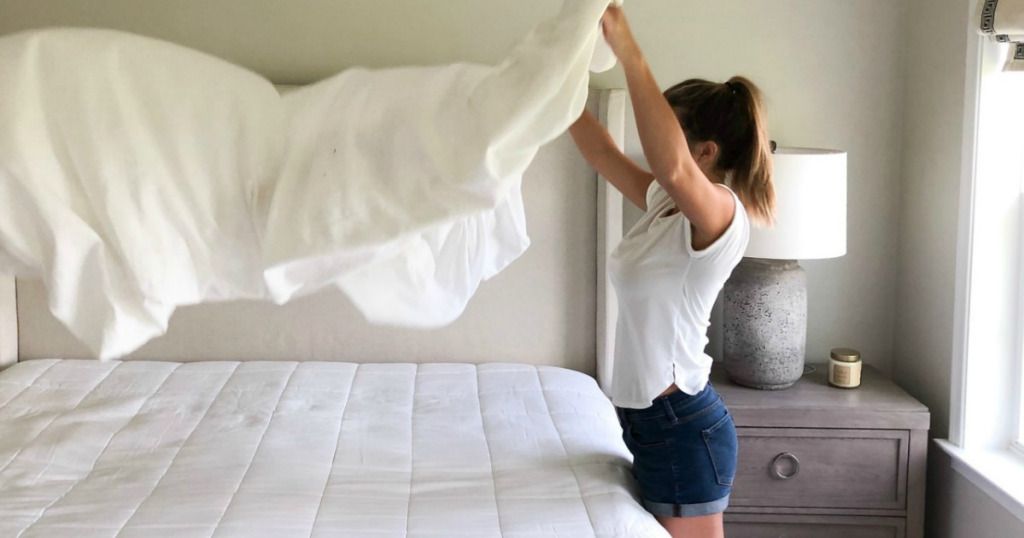
Image Source: Pinterest
So what are the proper methods you should use to wash your bed sheets?
Read the care label
Since most types of bed sheets have special instructions on how to wash them properly, make sure always to read the instructions located on the tag of each set of bed sheets and follow them accordingly.
It is imperative to follow the recommended water temperature when washing your bed sheets. Some fabrics can take hot or warm water while others will shrink or get damaged when soaked in heated water.
Wash bed sheet sets with the same type of cloth, together to save time, you can do so unless the label says otherwise.
It would be good to have a separate day for washing sheets in particular and do not include them together with your other laundry. This practice also prevents damage to the fabric and prolongs its lifespan as well.
Spot cleaning For deep stains, try your best to spot clean them by using mild detergent and a clean sponge. If you need to use a chemical stain remover read the label to make sure it is compatible with the fabric you are cleaning. In case you are not sure then try it out on a small corner section as a patch test to make sure it is safe to use.
Vinegar a natural stain remover works excellent in eliminating hard stains on your sheets.
Taking this extra step will ensure your sheets are wholly cleaned by the end of the wash cycle. Be careful not to dry or iron if the stain is still there, spot clean and treat the stain until it is removed.
Correct water temperature
This is vital because if you end up using the wrong water temperature on sheets that have threads that are sensitive to either hot or cold water, this will end up damaging and ruining your sheets.
So again double check your bed covers labels and set your washing machine to the appropriate settings. Most types of fabric used on sheets are safe to machine wash in warm then rinsed in the cold.
NOTE: Be extra vigilant about the required water temperature but if the fabric can take HOT water, then that would be better to kill any germs or bacteria that may be present.
Color sort
Similar to how you sort clothes when you do your laundry. Sort your sheets with the similar care label instructions into light, dark colours. If you do not do this, you run the risk of the colours running and mixing in the wash, thereby ruining that particular batch.
Machine or Hand wash
This too stems from what the care label indicates.
Polyester, cotton or a blend of both should be safe to clean at home. If your comforter or duvet is too big to wash at home, then you may want to take it to your local laundromat so you can use the bigger machines there.
Of course, you also have the option to swing by your dry cleaners and have them professionally clean it for you instead.
NOTE: Do not use bleach when washing your sheets, it ends up making them yellow.
How to wash silk sheets
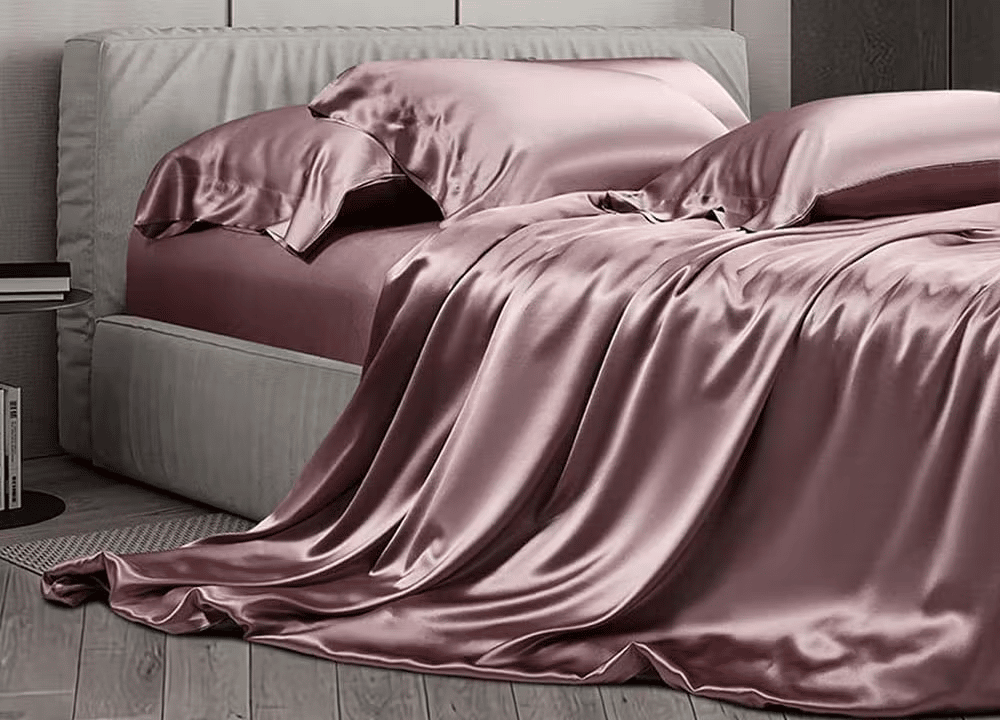
Image Source: Pinterest
Hand washing is best done for a few fabrics such as satin or silk that are too delicate to be machine washed. This would undoubtedly prolong its lifespan more than machine washing using the delicate cycle, which is an option as well.
Before you start handwashing lay the sheet out and vacuum thoroughly using a brush attachment, this will remove any dirt or dust on the surface and make washing it by hand more comfortable.
Then proceed to fill your bathtub or sink with lukewarm or cold water. Note that silk, satin or other sensitive fabrics do not do well in hot water.
Use a mild detergent, avoid detergents with enzymes and brighteners. If you do not have any mild soap available, baby shampoo works as a suitable replacement for washing your delicate sheets.
Once you have added the mild detergent, thoroughly soak your sheets in the water, do not scrub or twist the fabric to avoid damaging it, carefully swish it around sink, basin or tub to clean it. Do this until you have removed all the dirt lodged inside the fabric.
Do not leave your delicate sheets soaking for very long. Washing them for just a few minutes is more than enough.
Next, drain the soapy water and refill the sink, basin, tub with clean water and swish it around once more to wash away the soap. You may need to do this a couple of times to get all the soap out, depending on how soapy the water gets.
It is a good practice to handwash your new satin or silk sheets several times before using the delicate cycle of your washing machine. Follow the steps above on How to wash satin sheets as well.
For satin or silk sheets it is best to bundle the sheets inside a towel and twist the towel to try you delicate sheets.
Machine washing is undoubtedly a lot more convenient than hand washing. Here you just need to follow the above steps and when you put your sheets inside the machine make sure to spread the weight of it evenly.
This is done by carefully placing one end of the sheet inside then laying each section, causing it form a circle inside the machine.
Use a mild detergent and some fabric conditioner for best results. Then you just follow the instructions on the care label and set the device to the correct setting and wait.
Drying
The final step in how to wash bed sheets. Here you have a couple of options. Air dry your newly cleaned beddings or machine dry.
Air drying takes longer and requires the power of the sun, but the good thing about that is that the heat of the sun will sterilise your sheets and disinfect them of any germs or leftover bed bugs. As a bonus, you get to save some money on your electric bill as well.
Using a dryer is the only option if you are pressed for time and need to get the laundry done in a hurry. This is probably acceptable, but you need to make it a point to air/ sun dry your beddings once every couple of months just to make sure you kill any bacteria or bed bugs that may be present.
Ironing
You can also iron your sheets, do so when they are a bit damp and make sure to use the delicate setting on the iron. You can use a steam iron if you have it or regular flat iron works as well. Make sure it is clean before using. Use a spray bottle filled with water to iron out severe wrinkles.
How to wash flannel sheets
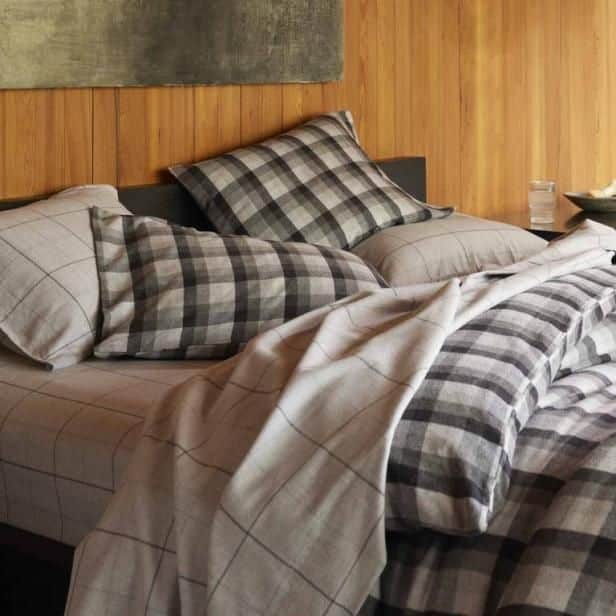
Image Source: Pinterest
Thankfully it is safe to wash flannel sheets using a washing machine straight away. Although to make sure, please check the care label for good measure.
It is recommended to pre-treat flannel sheets with a half cup of distilled vinegar. Doing this helps to lock in colours and will also prevent pills from forming. Pills are clumps of loose fibres on the surface of the flannel.
Flannel beddings are best washed in lukewarm or even cold water. Hot water is not recommended. Hot water can make your flannel bedding shrink.
For most sheets, it is best to use the gentle cycle setting on your washing machine. This will help prevent any unnecessary damage to the fabric. To dry your flannel sheets, you can either hang them out to dry or use your dryer. The pros and cons of this are discussed above.
How to wash bamboo sheets
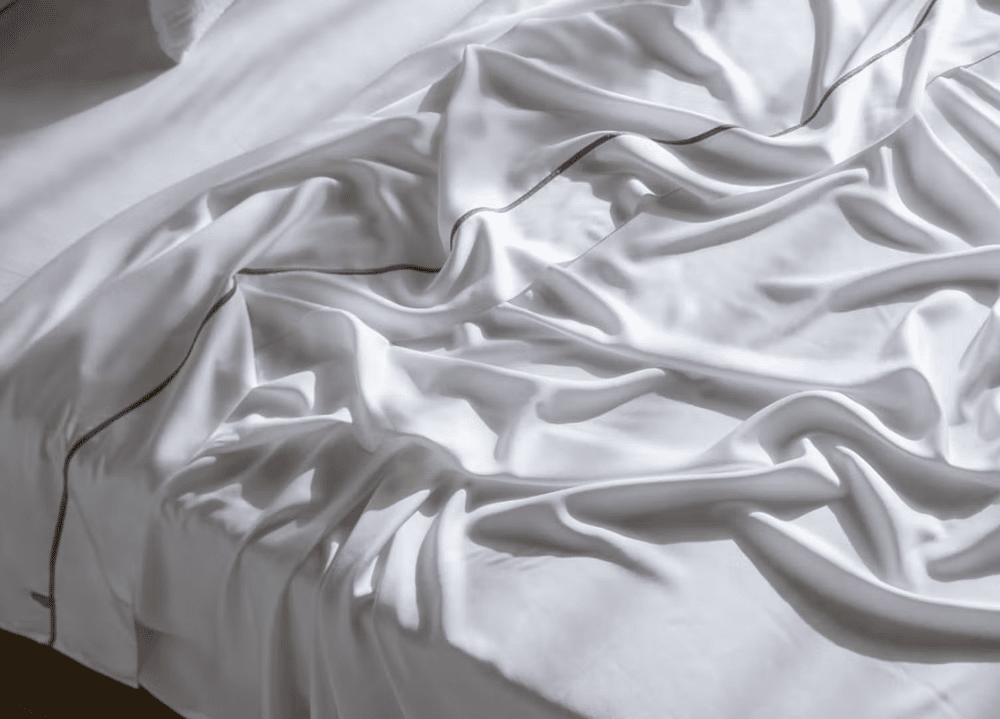
Image Source: Pinterest
Bamboo fibres are a bit delicate but sturdier than silk or satin so you can normally use the washing machine right away. Just to be safe and read the care label and follow its instructions.
The process on how you wash your bamboo sheets should be similar to how you wash your other beddings. The only difference is that the water temperature must be cold or warm.
Since bamboo fibres are naturally resistant to odours, bacteria and mildew, you do not need to use any bleach when washing them.
Bamboo sheets are also already super soft on their own, so you do not need any fabric softener for these. Please expect a bit more lint when washing your bamboo sheets for the first time, this is normal.
It is also common for bamboo bedding to shrink just a little bit since they are manufactured to be oversized in anticipation of this.
How to wash linen sheets
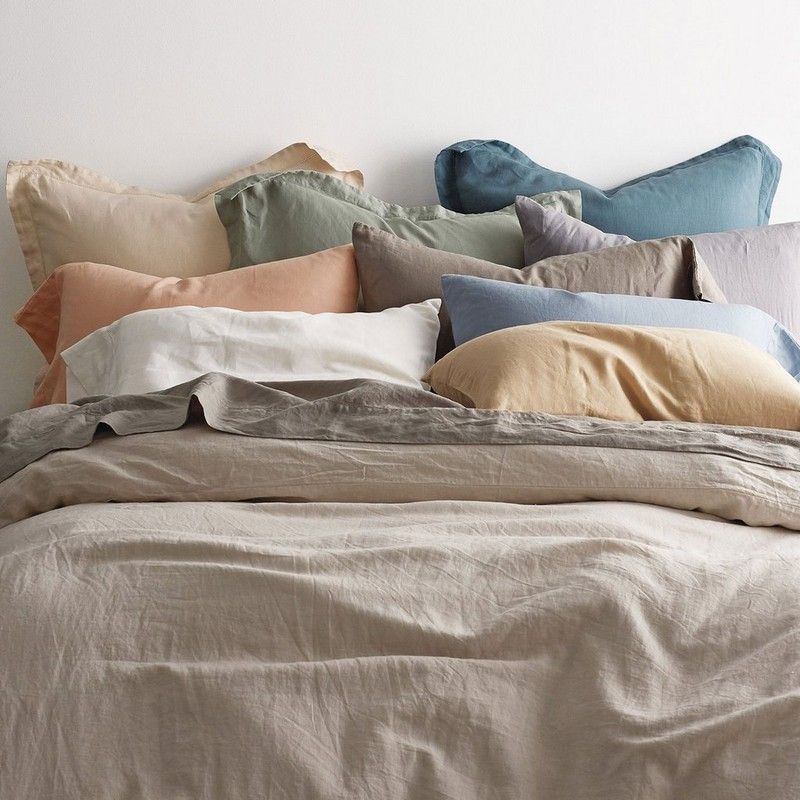
Image Source: Pinterest
Since this is also considered a delicate fabric, you need to take extra care when washing your linen sheets. Using fabric softeners are not recommended. Linen is supposed to just become softer from regular use and frequent washings.
To be safe, again read the care label and follow the instructions accordingly. Usually, water temperature required to wash linens is warm to cold.
Sferra, a manufacturer of fine linens, has an excellent guide on how to care for your delicate linens.
Do not twist or wring the sheets dry, it is best to hang them out to dry outdoors or if not possible use the dryer and tumble dry on a low setting.
Conclusion:
There are many different types of fabric when it comes to our bed sheets. Keeping them clean from bacteria and bedbugs is essential to maintain the golden standard when it comes to our day to day life.
Always make sure to read the care label. Follow the instructions exactly as they are written out. Spot clean using a mild detergent or vinegar, water solution. Use cold to warm water to be safe when washing and line dry whenever possible. The power of the sun will keep your beddings germ free.
For more amazing ideas you can have, visit Guy About Home today or you can check the related blogs:
- How To Clean Bathroom Tiles And Grout
- Cleaning Concrete Patio: What You Need to Know First
- How to Clean and Disinfect Your House
- How to Thoroughly Clean your Bathroom
- Cleaning Stove Tops and Everything In between
- 14 Kitchen Cleaning Tips for Effective Cleaning
- How To Clean The Kitchen Sink
- How To Clean Your Room – Routines and Techniques
- How To Clean Living Room Carpets & Rugs




